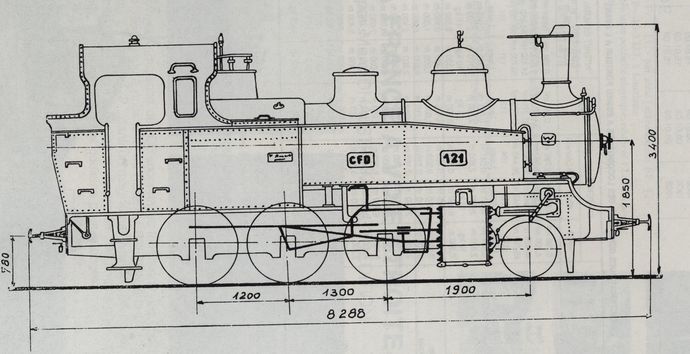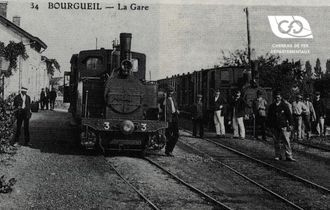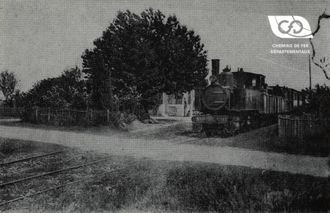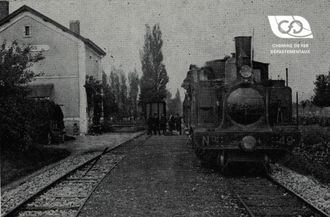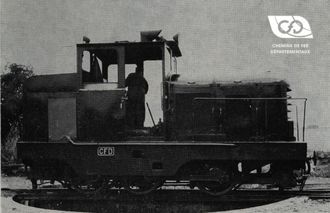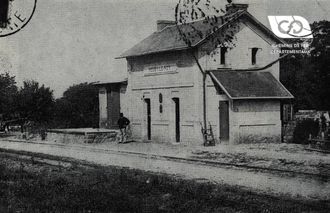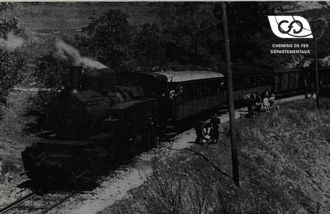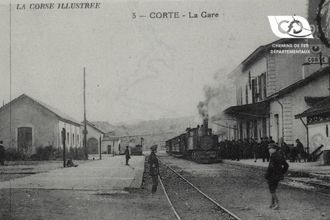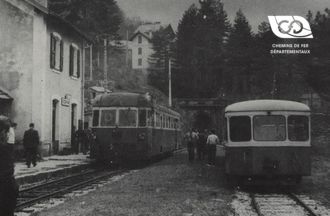Description of locomotive type 120
The boiler, stamped at 12.5 kg, consisted of a Belpaire type fire box and a cylindrical body comprising a bundle of 127 tubes of 0.045 long of 3.000 m representing a heating surface of 57.400 m2. The total heating surface was 63.27 m2. The steam dome was located on the front ferrule and the loaded safety valves were transferred to the furnace.
The cylinders were the same dimensions as those of the 68-78 series and the distribution of the Walschaert type. The wheel diameter had been increased to 1.030 m and the wheelbase to 4.400 m. The length over the buffers was 8,288 m, making it one of the company's largest single expansion machines.
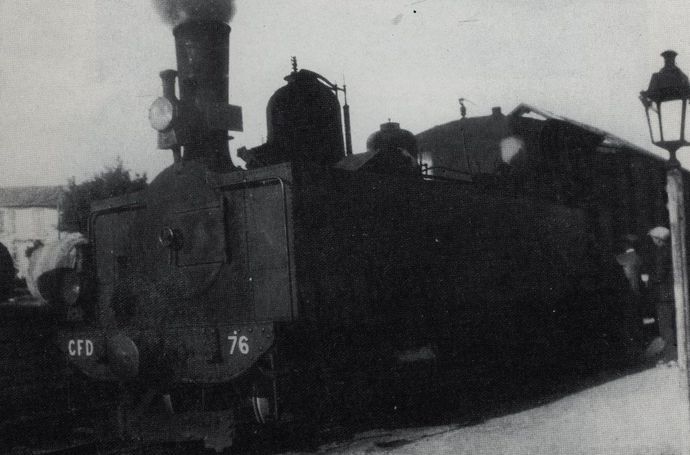
The operator's cabin, which has a wrap-around shape, has two side bays, two cylindrical portholes at the front and a large opening at the stern, giving access to a fuel bunker with a capacity of 11. The 3000 I water tanks with a forward cut-away side stopped at the smoke box tube plate, which was fitted with a round door.
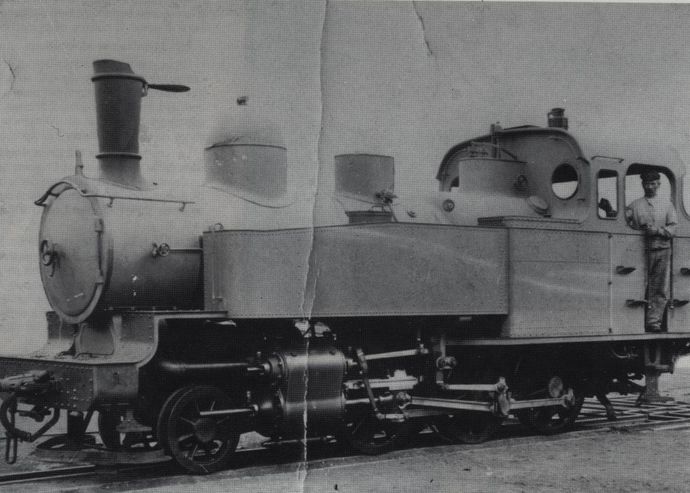
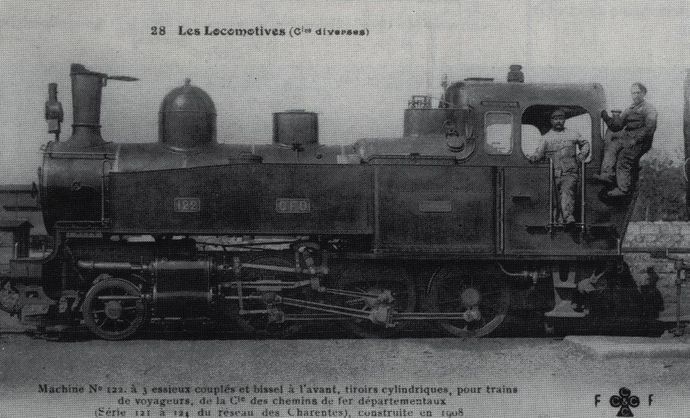
A handrail was fixed above the smoke box door and extended along the sides to the water boxes. A set of 5 steps and handrails attached to the sides of the shelter provided access to either the fuel bunker or the upper parts of the boiler.
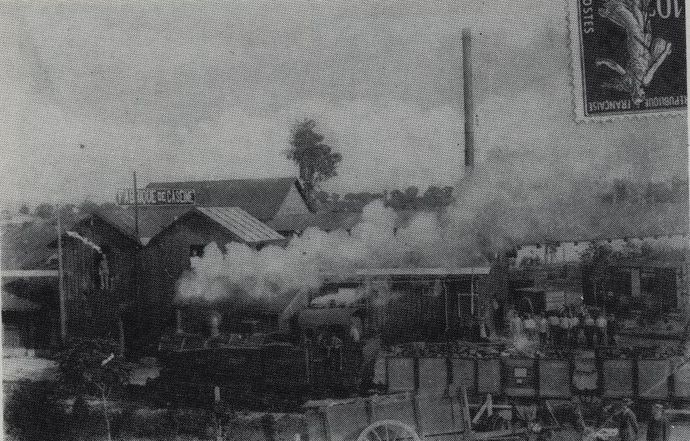
These machines were painted in light olive green and had yellow nets on the water tanks and shelter. The bumper ties were painted in vermilion red and had the company logo on the left and the machine number on the right of the central bumper. In addition, were attached to the water boxes:
- a rectangular builder's plate at the base of the fireplace
- a rectangular plaque with the company monogram in the centre
- a rectangular licence plate at the front
- A plate matching the shape of the smoke box was also attached to the smoke box and bore the number of the machine.
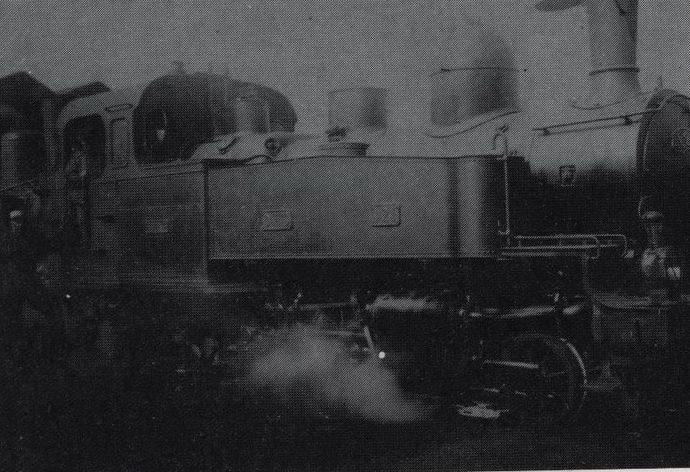
Delivery and Assignments of the Type 120 Locomotive
Received in early 1909 at Saint-Jean-d'Angély, these four locomotives, numbered 121 to 124, were immediately used to pull heavy freight trains. They provided service on all the lines of the network and were very popular. Units 121 and 122 were requisitioned by the 10th Section of the Chemins de Fer de Campagne and were used by the Revigny depot to pull supply trains on the front from 12 March 1916 to 20 April 1919.
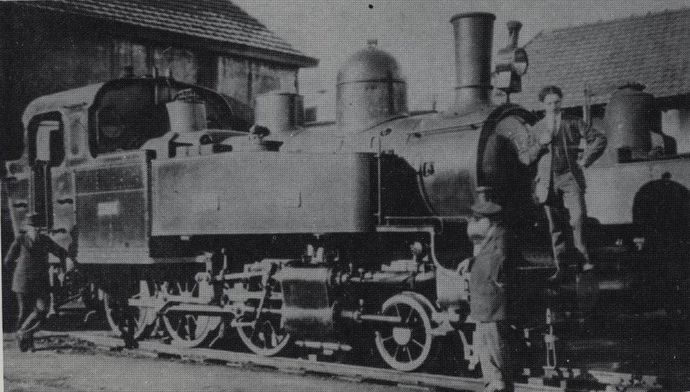
These machines, which were in constant use, were put out of service prematurely before the Second World War. Parked in deferred repair, they were still unusable in 1939. Faced with the importance of the repairs to be considered for their restoration, the company decided to reform them the following year.
